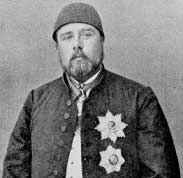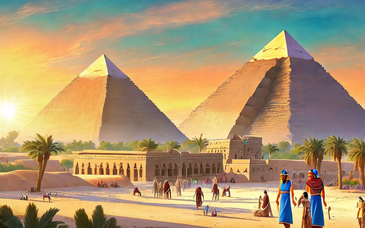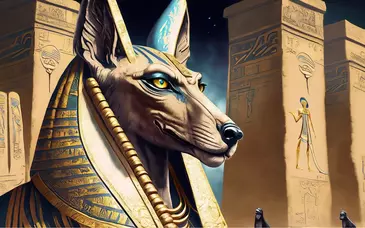
Egypt had a unique perspective on America’s Civil War. The Union blockade and the Confederacy’s own policy of withholding cotton from export dried up supply, so Europeans turned to Egypt’s cotton as a substitute. Overnight, vast sums of money energized the Egyptian economy. The Khedive Ismail (right), something of a visionary, used this money to modernize his nation, and thereby recapture some of the power and prestige of ancient times. Ismail dreamed of Egyptian independence from the empire of the Ottoman Turks, and envisioned a modern, Western Egypt, equal with the great powers of Europe. Ismail’s uncle Saïd had begun construction of the Suez Canal (partly funded by Egyptian cotton sales). Ismail finished the project, then threw a $10,000,000 party to impress the world. Ismail’s dreams seemed doomed from the start, since the extreme financial burdens that resulted from the canal project were leading to growing British and French influence in Egypt.
American technology and know-how offered a possible way out. Ismail needed commanders to organize and oversee the army, instructors to teach his soldiers, and engineers to build forts and map territories. Like the rest of the world, Ismail had watched from afar as the Civil War tore the United States apart. But he also realized that chaos brings opportunity. America was now filled with experienced practitioners of the most highly technological war the world had yet seen, most of whom now found themselves idle.

Ismail’s Cairo was a grand city, especially the new Ismailyeh quarter. Here on the banks of the Nile lay the luxuriant Ezbekiyah garden, and the city’s best shops, restaurants, hotels, and homes, as well as the foreign consulates. Nearby was Abdin Palace, Ismail’s winter home, and his latest extravagance, a new opera house. In fact, Ismail commissioned Giuseppe Verdi to write Aida to commemorate the opening of the facility. One account describes that the Khedive “also had an opéra-bouffe company, and a French comedy troupe, a hippodrome, and circus.” To the northwest lay beautiful tree-lined Shubra Avenue (left), the place to see and be seen. And of course, the city boasted the world’s most impressive tourist attractions, the Pyramids and the Sphinx.


